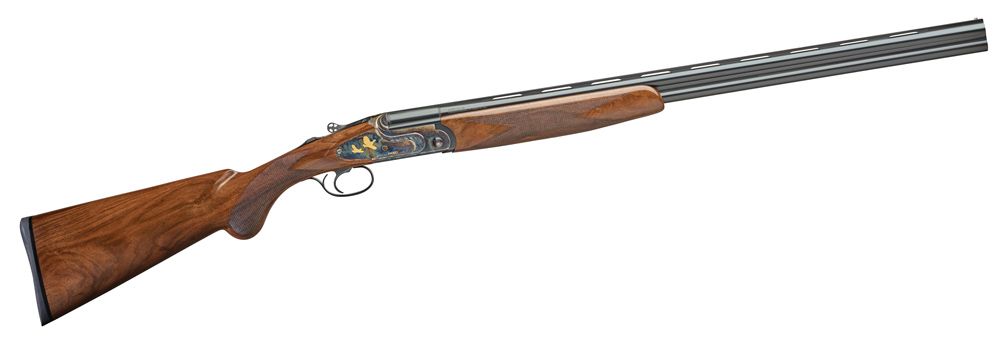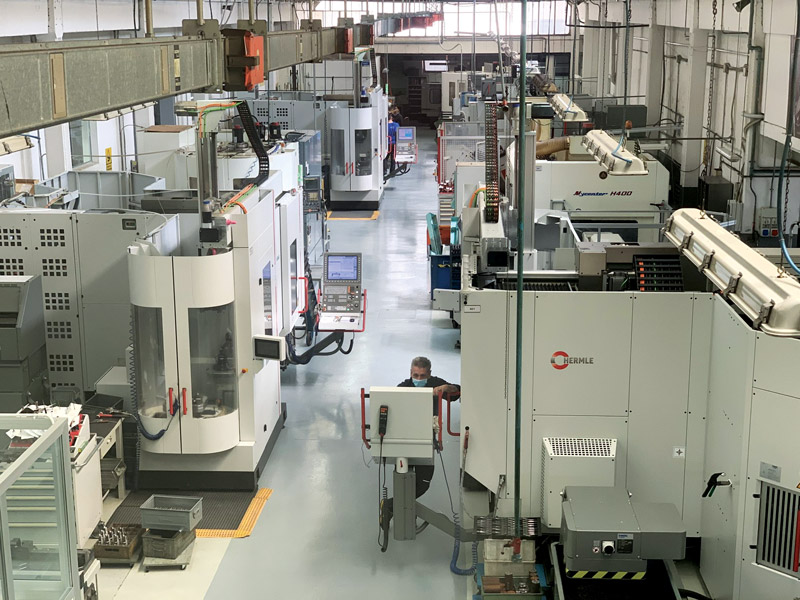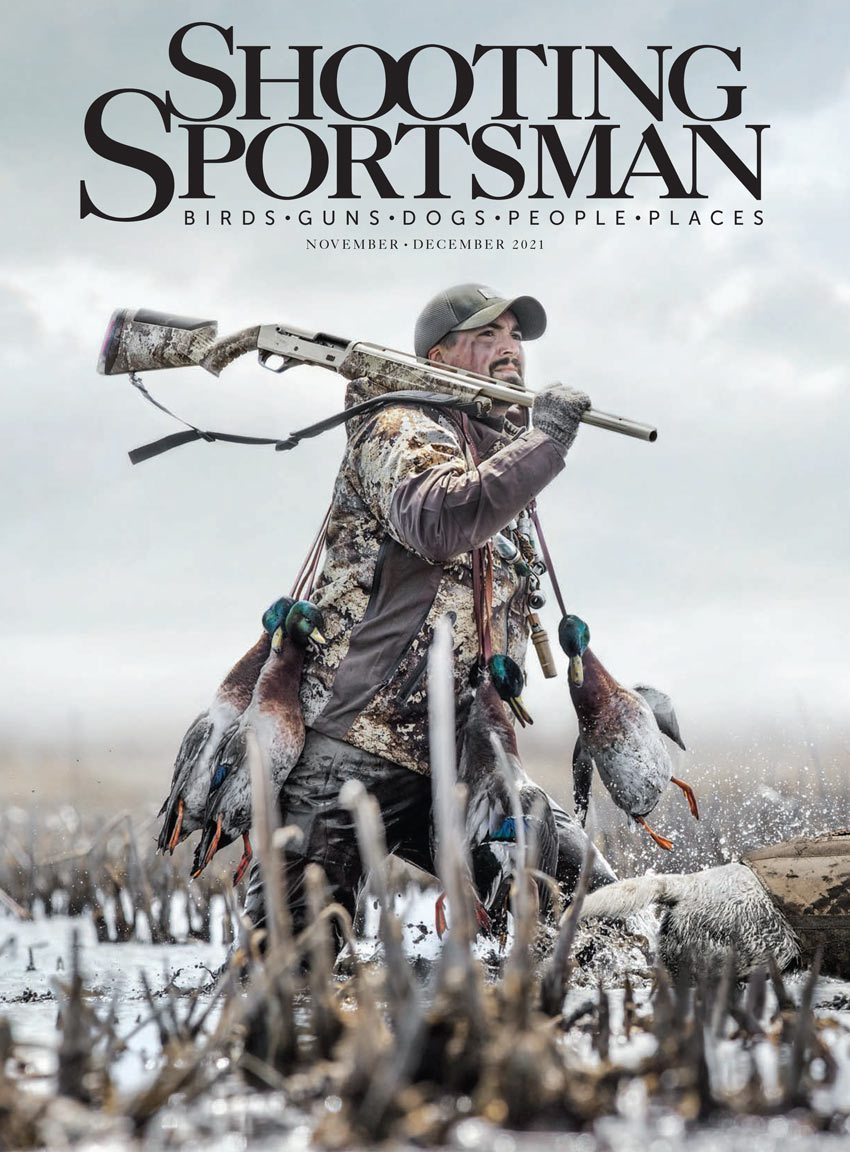The Italian gunmaker is focused on the future
Only one of the Sunday-morning regulars was still there when I pulled into the club. He stopped closing up the skeet houses when he spotted the sleek 20-gauge over/under I set in the rack and came over to see it. New guns have a magnetic appeal at gun clubs, especially good-looking guns like this one.
“What is that?”
“It’s a Fausti.”

“I don’t know much about their guns, but I sure like looking at the gun sisters,” he said. Mike is an ardent shooter and hunter, with several Italian O/Us already in his safe. Still, like a lot of gun people, he’s seen Giovanna, Barbara and Elena Fausti in countless ads but hasn’t shot their guns. “Can I pick it up?” He mounted the gun and enthused over the balance. I told him he should shoot it.
He smacked a high and a low house from a few steps behind Station 4, and then he did it again, commenting on the gun’s low recoil before handing it back to me a little regretfully. If selling review guns weren’t frowned upon, I could have closed the deal right there. As it is, a Fausti might join the other Italian O/Us in his safe someday, especially after I told him the gun came in 16 gauge on a scaled frame.

After 73 years in business, Fausti doesn’t have a problem making good guns. It does face the challenge of getting more of those guns in front of American shooters and into their hands, where the guns can sell themselves. Making good guns is difficult. Selling guns in a crowded market is even more difficult.
Fausti has a plan for the next 70 years—a plan that concentrates on the all-important American market. In an email outlining the company’s plans to elevate its profile among American shooters, Giovanna Fausti said, “Hard times required hard steps, and we think that a new image in line with the modern times can give a clear message to our customers: Fausti is here.”

Giovanna, the middle daughter of company founder Stefano Fausti and now the CEO of the company, followed up with me by Google Meet for an update. Although we’ve never met, I recognized her immediately from so many Fausti ads over the years. Giovanna, Barbara and Elena have been the very visible faces of Fausti since taking over their father’s business in 1996. Known as “the gun sisters,” they are unique in the male-dominated world of gunmaking; and while they have been front and center in the company’s ad campaigns over the years, Giovanna told me it was time for a change. “Our old ads with the sisters helped us stand out,” she said, “because there are so many Italian gun companies but only one run by three sisters. People know us. Now we want people to know our guns.”

Fausti’s new slogan, “I’ll Be Your Gun,” lets the company’s guns speak for themselves—and as I saw at my club, the guns are perfectly capable of speaking volumes to shooters. Pick any current Fausti gun and look at it. The entry-level Caledon O/U impresses with the quality of its fit and finish and especially the depth of the engraving in a gun of its grade. The Class SLX I’ve been shooting is an eye-catcher, with its gold-embellished, case-colored sideplates. At the high end, the full-sidelock Senator is a gorgeous fine custom gun correct in every way down to its hand-detachable sideplates.
You can’t make guns without a gun factory, and since Covid precluded a visit, our interview continued with a quick virtual tour of the Fausti plant in the town of Marcheno, near the top of Italy’s long, narrow gunmaking district of Val Trompia. One of the early business decisions the sisters made in the 1990s was to bring all their production in-house and focus on quality over quantity. These days all of Fausti’s guns come from its factory, which employs about 30 workers. The factory is clean and modern and shows the result of recent investment in new technology and top-of-the-line CNC machinery. Machines that work on several parts at once to tolerances human hands can’t match share space with old-fashioned gunmaking benches bathed in natural light where artisans fit wood to metal on high-grade guns.

Fausti produces a wide range of guns: O/Us, side-by-sides and double rifles. The company makes competition and hunting guns and even a gas semi-auto. The line is divided between “Core” production guns and “Boutique” custom models, with a full line of each being offered. While in the past Fausti partnered with American companies to build guns to their specifications, Giovanna assured me that going forward Fausti will direct its energies into raising awareness of the company, not confusing people by making guns for others.
Raising visibility begins—literally—with a new logo. Emblazoned on the trigger guard of every new Fausti gun, the twinned, back-to-back gold Fs help the guns stand out on dealers’ racks. The Fausti coat of arms served as the company’s symbol from its founding, in 1948, to present. The letters of the new logo intertwine at the bottom to resemble both a stag’s antlers and the shield in a coat of arms.
The logo, I will confess, didn’t do much for me at first, until I saw it on a gun. It actually appears twice on the Class SLX: on the trigger guard and on the toplever. It’s good looking and distinctive, and it leaves no doubt that the gun is a Fausti. It’s also a logo designed to look good on clothing and shooting accessories.
Making Fausti guns stand out is the crux of the company’s new push. Everyone agrees that Fausti already makes good guns. “I can’t remember the last time I had to send one back,” said Bryan Bilinski of Fieldsport, in Michigan, one of Fausti’s dealers. “Fausti quality control is excellent. The wood-to-metal and metal-to-metal fit is all great. They are quality guns.”
According to Joel Etchen of Joel Etchen Guns, in Pennsylvania: “We are really impressed with the Fausti line of guns and with the three sisters. The DEA side-by-side is one of our store favorites. People like its trim build and quick pointability. The redesigned guns with new engravings are very attractive, and our customers have been very pleased with the products.”
Along with a network of higher-end dealers, Fausti helped raise its presence in the US enormously with the establishment of Fausti USA in 2009. Located in Fredericksburg, Virginia, the facility serves as a showroom, repair center and warehouse. There is a Fausti dealer, Elite Shotguns, at the National Shooting Complex, in San Antonio, to help the company serve the target market. Fausti also has a booth at the National Shooting Complex to build brand awareness and let shooters try the company’s guns at events like the National Sporting Clays Championship, held in October. The company plans to expand its number of dealers in the US as well.
At the same time Fausti is expanding dealerships, it is shrinking its offerings. The company won’t stop making the high-end Boutique guns or several other models, but it does plan to focus efforts in the US on the seven best-selling guns from the Core lineup.
Among those seven best-sellers is the Class SLX that I shot. It’s appropriately named, as the gun exudes, well, class. An O/U with sideplates, the Class is the most ornate of the Core over/unders. The gun comes in all gauges, and Fausti takes particular pride in its smaller bores. One of the first decisions the sisters made upon taking over their father’s business was to learn how to make smallbore guns on their own frames and with the right barrel dimensions to perform well. It’s a decision that will serve them well as they move more forcefully into an American market in love with sub-gauges.
You can see that experience brought to 3D life in the 20-gauge Class SLX. With a Prince of Wales grip, a slender wrist and a rounded forend in place of the all-too-common Schnabel, the Class SLX has graceful lines. And since form generally follows function, those lines help make it into a natural pointer. At 6 pounds 10 ounces with 28-inch barrels and a bit of weight-forward bias, my test gun was easy to shoot at skeet targets—and I couldn’t help thinking it would have made a good gun for stout pheasant loads or an afternoon in the dove field.
Crisp triggers that broke at 4 pounds 13 ounces for the bottom barrel and 4 pounds 9 ounces for the top helped the gun’s shootability, too, and the manual safety assured I didn’t lose any targets from operator-induced failures to fire. Like all Fausti O/Us, the Class SLX features the company’s Four Locks action—Fausti’s twist on the common underbite lockup seen on so many Italian guns. Two lugs on the sides of the frame engage recesses in the monoblock to keep everything together during the stress of firing. It’s likely not necessary on a hunting gun, but if you’re worried about a gun wearing out on your grandchildren, the Four Locks design might bring you peace of mind.
Not only does the Class SLX shoot, but it also looks good doing it. Wood-to-metal fit was nearly perfect, including the inletting around the sideplates. The laser engraving is just deep enough that it doesn’t disappear from certain angles, as some laser work does, and the gold pheasants and partridge flying across a canvas of case colors may not be an original décor scheme, but they look good. The walnut on my gun was fairly straight grained, and while lack of figure might be the one quibble I had with the Class SLX’s appearance, I couldn’t find any fault in the color of the wood, the checkering or the oil finish.



Fausti’s Core Line
American buyers will be seeing more of Fausti’s Core line as the company promotes its best-selling guns. A custom gun still can be ordered, of course, but the seven Core best-sellers have a lot to offer all but the highest-end customers. All double-barreled guns except for the L4 Sport come in all five gauges, and many offer a choice of 30-inch barrels along with the more common 26- and 28-inch tubes.
Caledon
The entry-level Caledon over/under features the Four Locks action, a full pistol grip and a silver receiver half-covered in deep scroll engraving. The stock has enhanced Optiwood grain and sells for $2,200 in 12 and 20 gauge; $2,800 in 16, 28 and .410.
Class SLX
The Class SLX O/U (which I shot) comes in all gauges and 26-, 28- and 30-inch barrel lengths. It comes with five choke tubes and a hard case, as do all the Fausti guns with the exception of the .410s, which have fixed Modified & Full chokes. The Class SLX lists for $3,560 in 12 and 20 gauge; $4,160 in 16, 28 and .410.
Class Aphrodite
Fausti’s women’s O/U is stocked to better fit women, with a shorter length of pull and slightly raised Monte Carlo stock. The silver receiver is covered with scroll engraving, and there’s a cameo of Aphrodite on the bottom. It comes in all gauges; in 26-, 28- and 30-inch barrel lengths; and with 3” chambers, to make it suitable for hunting and clays. Prices are $4,200 in 12 and 20 gauge; $4,800 in 16, 28 and .410.
L4 Sport
Fausti’s over/under clays gun, the L4 Sport has a silver receiver with blue accents, a fairly low rib design and a ventilated mid-rib. The competition-style stock features an adjustable comb. Prices are $3,150 in 12 and 20 gauge; $3,750 in 28 and .410.
DEA
A light, trim side-by-side, the DEA is advertised as weighing less than five pounds in 28 gauge, making it an ideal carrying gun. The Anson & Deeley boxlock has a case-colored or coin-finished receiver and scroll engraving. It has a straight stock, splinter forend and single, non-selective trigger. Prices are $3,850 in 12 and 20 gauge; $4,450 in 16, 28 and .410.
DEA SLX
The top grade of the DEA comes with a silver, sideplated receiver and AAA walnut in place of AA. In all other ways it’s configured like the DEA. Prices are $5,150 in 12 and 20 gauge; $5,750 in 16, 28 and .410.
Progress Upland
Not as well known as Fausti’s break-actions, the Progress Upland is a soft-shooting, easy-cleaning gas gun. It has a silver receiver embellished with scroll and gold birds, and the stock has Optiwood-enhanced walnut grain. The 12-gauge has a 26-, 28- or 30-inch barrel; the 20-gauge has a 26- or 28-inch tube. Price is $1,700.
You don’t make a good-looking, well-balanced gun like this by accident. Giovanna told me that her father, who passed two years ago, approved of his daughters’ management of the company. “He was proud of us,” she said, “and he was very proud of the team we had formed. It takes a team to build guns. Some of our workers have been with us for over thirty years.” While the Core guns are largely machine made, unlike the Boutique line, all of the guns undergo final fitting and rigorous inspections before they leave the factory. “My father taught me that a gun is a living thing,” Giovanna said. “You have to hold it and listen to the sound it makes as it closes.”
If you close a Fausti gun and listen carefully, you might just hear it say, “I’ll be your gun.”
For more information, contact Fausti USA.
PHOTOS COURTESY OF FAUSTI USA
Buy This Issue!

Read our Newsletter
Stay connected to the best of wingshooting & fine guns with additional free content, special offers and promotions.




